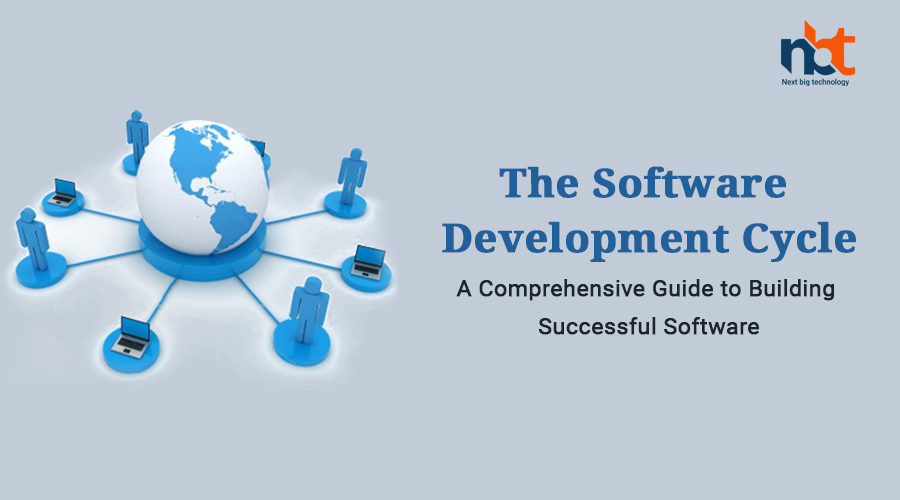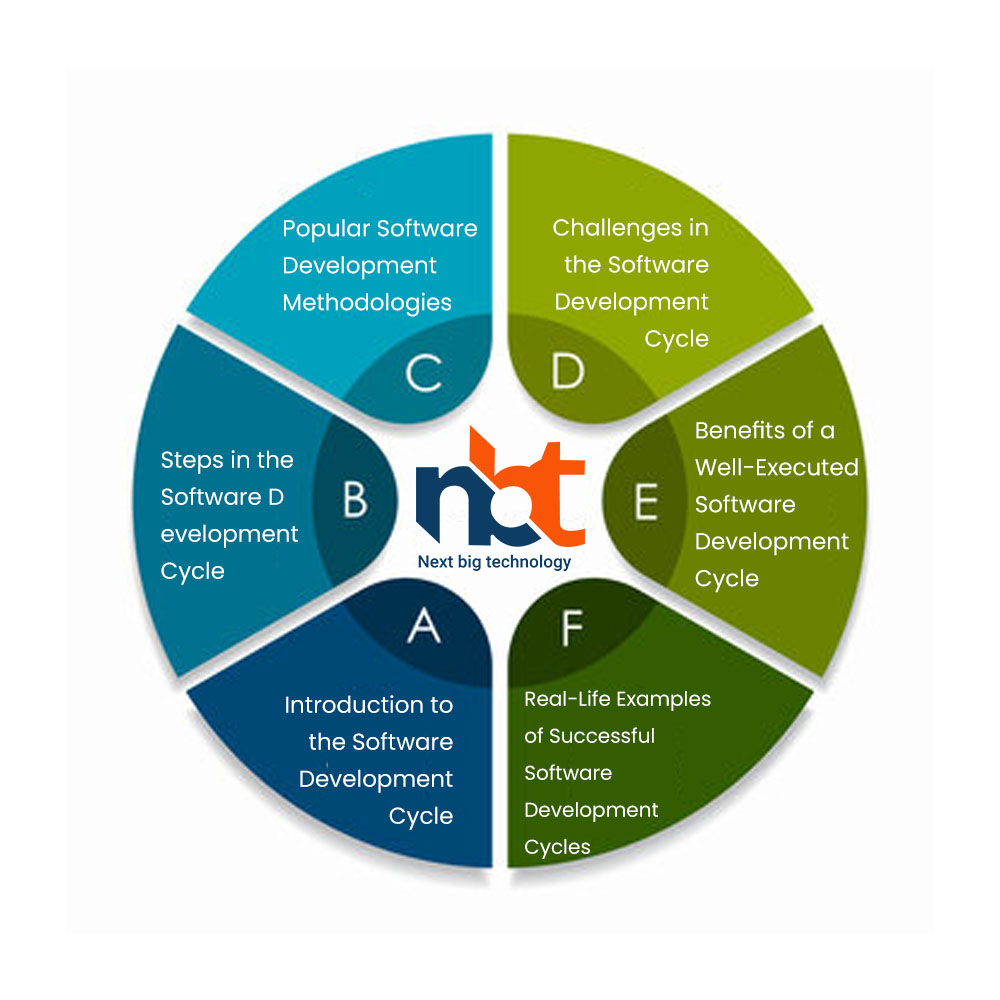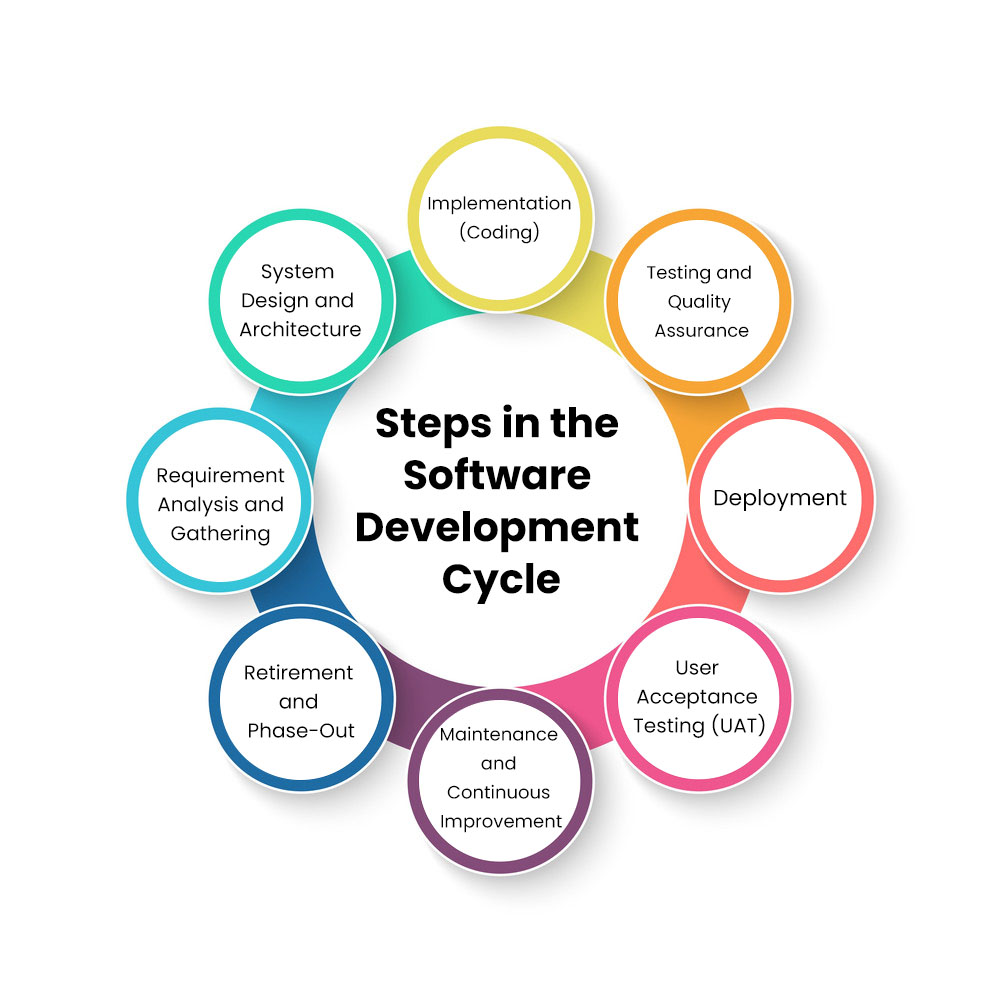The software development cycle, also known as the software development life cycle (SDLC), is a systematic process that outlines the stages involved in creating high-quality software solutions. From conceptualization to deployment, each phase of the cycle plays a critical role in ensuring the creation of reliable, functional, and user-friendly software applications. This guide explores the intricacies of the software development cycle, delving into each step in detail to provide a comprehensive understanding of the process.
Table of Contents
Introduction to the Software Development Cycle
- Understanding the Importance of Systematic Software Development
- Overview of the Software Development Life Cycle
Steps in the Software Development Cycle
Step 1: Requirement Analysis and Gathering
- Identifying Stakeholders and User Requirements
- Defining Functional and Non-Functional Requirements
- Creating a Comprehensive Requirement Specification Document
Step 2: System Design and Architecture
- Designing the System’s Overall Architecture
- Defining Data Structures and Databases
- Creating System Flowcharts and Diagrams
Step 3: Implementation (Coding)
- Writing Code According to Design Specifications
- Following Coding Standards and Best Practices
- Documenting Code for Clarity and Maintenance
Step 4: Testing and Quality Assurance
- Planning and Designing Test Cases
- Conducting Unit, Integration, and System Testing
- Performing Regression Testing and Bug Fixes
Step 5: Deployment
- Preparing the Software for Release
- Selecting Deployment Environments (Development, Staging, Production)
- Ensuring Compatibility with Target Platforms
Step 6: User Acceptance Testing (UAT)
- Involving End Users in Testing
- Validating Software Functionality and Usability
- Addressing User Feedback and Incorporating Changes
Step 7: Maintenance and Continuous Improvement
- Monitoring Software Performance in Real-world Scenarios
- Identifying and Resolving Post-Deployment Issues
- Incorporating User Feedback for Enhancements
Step 8: Retirement and Phase-Out
- Evaluating the Software’s Lifecycle
- Making Decisions About Software Retirement or Replacement
- Ensuring Data Migration and Archiving
Popular Software Development Methodologies
Waterfall Model
- Sequential Approach with Well-Defined Phases
- Ideal for Projects with Clear and Stable Requirements
Agile Methodology
- Iterative and Incremental Approach
- Emphasis on Flexibility, Collaboration, and Quick Iterations
Scrum Framework
- Divide Project into Sprints for Iterative Development
- Roles Include Scrum Master, Product Owner, and Development Team
Kanban Method
- Visualize Workflow and Limit Work in Progress
- Focus on Continuous Flow and Process Improvement
DevOps Practices
- Integration of Development and Operations Teams
- Automation, Continuous Integration, Continuous Delivery (CI/CD)
Challenges in the Software Development Cycle
Changing Requirements
- Adapting to Evolving User Needs and Market Trends
Project Delays
- Managing Time Constraints and Unforeseen Delays
Scope Creep
- Controlling Expansion of Project Scope Beyond Initial Requirements
Communication Gaps
- Ensuring Clear and Effective Communication Among Team Members
Quality Assurance
- Ensuring Comprehensive Testing and Bug Detection
Benefits of a Well-Executed Software Development Cycle
Improved Efficiency
- Streamlining Processes for Faster Development
Enhanced Product Quality
- Delivering Software with Fewer Bugs and Defects
Accurate Requirement Fulfillment
- Aligning Software with User Expectations
Reduced Costs
- Minimizing Rework and Post-Deployment Fixes
Customer Satisfaction
- Meeting User Needs and Delivering Value
Real-Life Examples of Successful Software Development Cycles
Microsoft Windows Operating System
- Iterative Development and Frequent Updates
Facebook App
- Agile Methodology and Continuous Improvements
Amazon Web Services (AWS)
- DevOps Practices and Cloud-based Infrastructure
Conclusion
The software development cycle is a systematic framework that guides the creation of software applications from conception to deployment and beyond. By understanding and implementing the various steps of the cycle, software developers can ensure the development of robust, functional, and user-friendly software solutions. The choice of development methodology, effective communication, and continuous improvement contribute to the success of the cycle and the delivery of software that meets user expectations and drives innovation in the digital landscape.




















